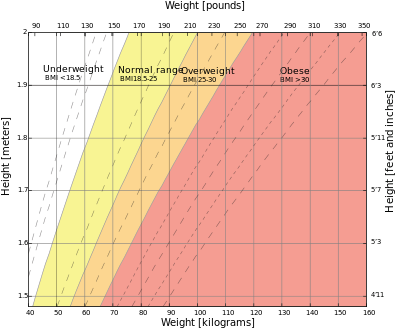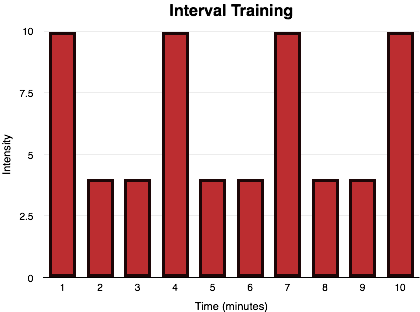1. “What is an interval workout?” – Interval training is a type of workout that involves alternating series of low-to-high intensity exercise interspersed with periods of rest/recovery. The
high-intensity periods are typically close to maximum intensity and the recovery periods are at a lower (<50%) activity level. Basically short periods of work followed by rest with the main goal being increasing speed and cardiovascular fitness. For example: jog for 60 seconds and then sprint for 30 seconds repeated 5 times. If you’re not up to jog:sprint you could utilize walk:run instead! The idea is to be comfortable with the “low” phase and push yourself with the “high” phase.
popular with DVD series such as P90X and Insanity. The idea is after warming up, you perform 3-10 repetitions of high intensity (near-maximum intensity) exercise separated by intermittent medium-intensity (~50% intensity) exercises. The difference between regular intervals and H.I.I.T. intervals is the ratio of high intensity:medium intensity activity. Regular intervals are typically 2:1, low:high intensity. HIIT is the exact inverse: 2:1 high:low intensity. For example following a warm-up period you could sprint for 60 seconds then jog for 30; repeated 10 times. If that’s too intense maybe you could jog for 30 seconds and walk for 15 repeated 5 times. Because of this type of intensity these workouts typically last from 8-30 minutes; perfect for those limited on time! There is no specific formula, just whatever works for you! Check out some of our great H.I.I.T. style workouts right here!
Or if you have any questions about the information I’ve presented please feel free to email me at TonenandTightenFitness@gmail.com

By Jared Beckstrand
Have a great day!
Jared





